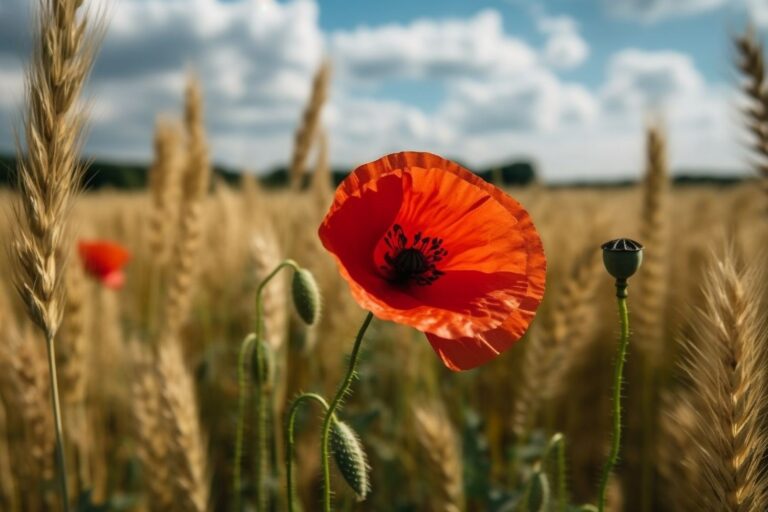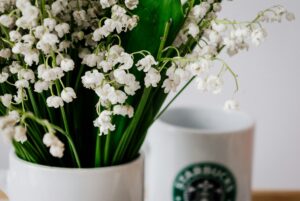August doesn’t slip quietly into the calendar—it bursts in, sun-soaked and unapologetically bold. It’s the final full month of summer, all about big skies, ripe fields, and fearless energy just like the zodiac sign it represents, Leo.
Fittingly, the August birth flowers, gladiolus and poppy, are anything but shy. One stands tall like a floral spear, commanding attention; the other sways with poetic beauty, full of color and meaning.
Together, they speak to strength of character, vivid emotion, bold individuality, and heartfelt remembrance. These aren’t flowers that fade into the background, they own their space—just like August and the people born in this bold month.
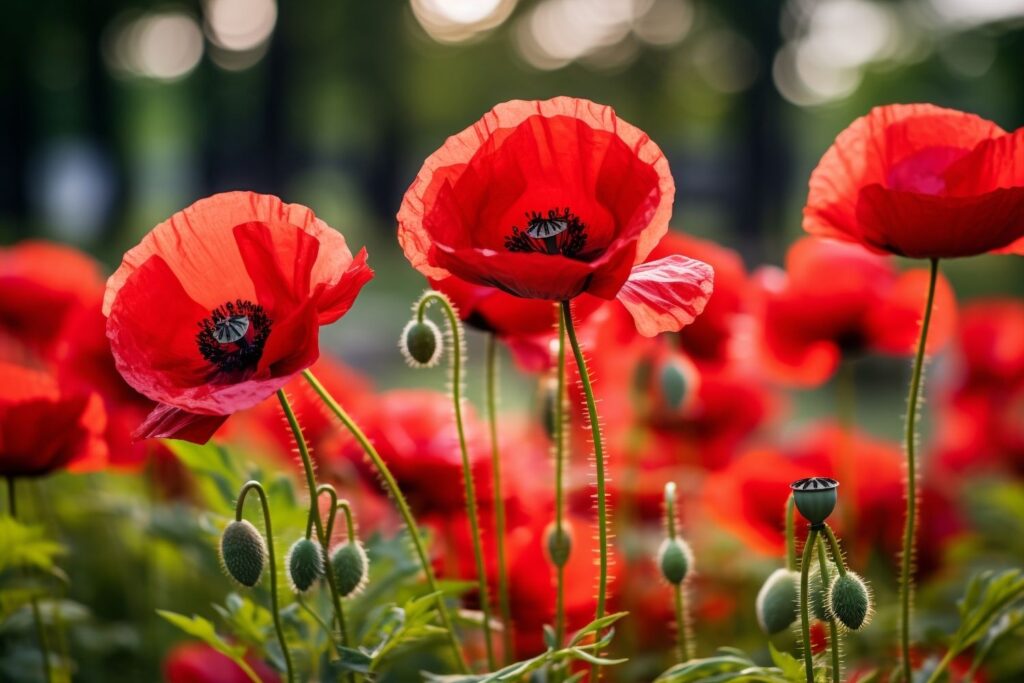
What Are Birth Flowers?
Think of birth month flowers as nature’s version of a birthday signature-less flashy than a gemstone, but way more alive. The tradition dates back centuries, rooted in the idea that flowers blooming in a specific month hold qualities that reflect the people born alongside them. Over time, this evolved into the custom of flowers by month: a kind of floral shorthand for identity, emotion, and seasonal energy.
But it’s not just symbolism. It’s rhythm. Flowers mark time. What’s blooming tells you where you are in the year—whether it’s the soft stirrings of spring or the full-throttle heat of late summer. The blooms of each month carry that atmosphere, and when you give someone their birth flower, you’re offering a little piece of their season.
In August’s case, the message is clear: Go big, stand tall, and don’t be afraid to feel deeply. Gladiolus and poppy aren’t here for the background—they’re front and center, all color and meaning, owning the moment. Just like August-born folks tend to do.
August Birth Flower: Gladiolus
“There is nothing stronger than gentleness.” – Jean Baptiste Lacordaire
The gladiolus lives at that intersection—bold in form, gentle in meaning. With its tall, spear-like stems and layers of dramatic blooms, this flower gets its name from the Latin gladius, meaning sword. It’s no wonder the ancient Romans associated it with warriors and victory. But beneath the sharp silhouette, there’s grace: the gladiolus symbolizes integrity, sincerity, and strength of character.
As one of the August birth flowers, it speaks to those who move through life with confidence—not always loud, but always clear. Let’s dig into its history, meanings, and how to grow this summer showstopper.
Gladiolus: History and Symbolism
The gladiolus has a rich past, reaching back to ancient Rome, where it was worn by gladiators—literally. Legend says that victorious fighters were showered with these flowers, which soon became a symbol of triumph and moral strength. The sword-like shape of the stem only reinforced its connection to valor, bravery, and resilience.
Fast-forward to the Victorian era, and the gladiolus took on a more romantic tone. Its pointed form was said to “pierce the heart” with love—so gifting a gladiolus was the 19th-century version of a grand romantic gesture. Still dramatic, just in a different way.
Today, the flower is often tied to loyalty, remembrance, and undeniable commitment—qualities that echo August’s sense of fullness and maturity. It’s a flower that says, “I’ve been through something. And I’m still standing.”
Gladiolus: Colors and Their Meanings
One of the things that makes the gladiolus so captivating—aside from its statuesque posture—is its unapologetic range of color. Each shade brings its own message, making this flower not only beautiful but also beautifully expressive.
- Red gladiolus wears its heart on its sleeve. It’s the color of deep love and emotional courage—the kind that stands up for what (or who) it believes in. This is the gladiolus you send when you mean it, no soft landings.
- Pink gladiolus speaks more softly, but no less sincerely. It carries the tone of gentle affection, of kindness that’s steady and real. It’s the flower of showing up—warm, compassionate, and quietly loyal.
- White gladiolus is clean, clear, and grounded. It’s often used in memorials and sympathy flower arrangements, but not just for mourning—it represents honesty, reverence, and the kind of remembrance that brings peace rather than pain.
- Yellow gladiolus is your sunshine in bloom. Bright, optimistic, and full of personality, it’s the flower you’d bring to a friend who needs a lift—or just to celebrate a moment of uncomplicated joy.
- Purple gladiolus leans into its mysterious side. It’s elegant, a bit moody, and hard to pin down—in the best way. This one’s for the thinkers, the artists, the dreamers who speak volumes without raising their voice.
- Orange gladiolus is a firecracker—bold, spirited, and impossible to ignore. It’s the color of celebrations that run late into the night, full of laughter, movement, and momentum.
Whatever shade you choose, gladiolus doesn’t do surface-level. Its colors dig deep, speaking to the real emotions that often go unsaid—a flower that stands tall and tells the truth, beautifully.
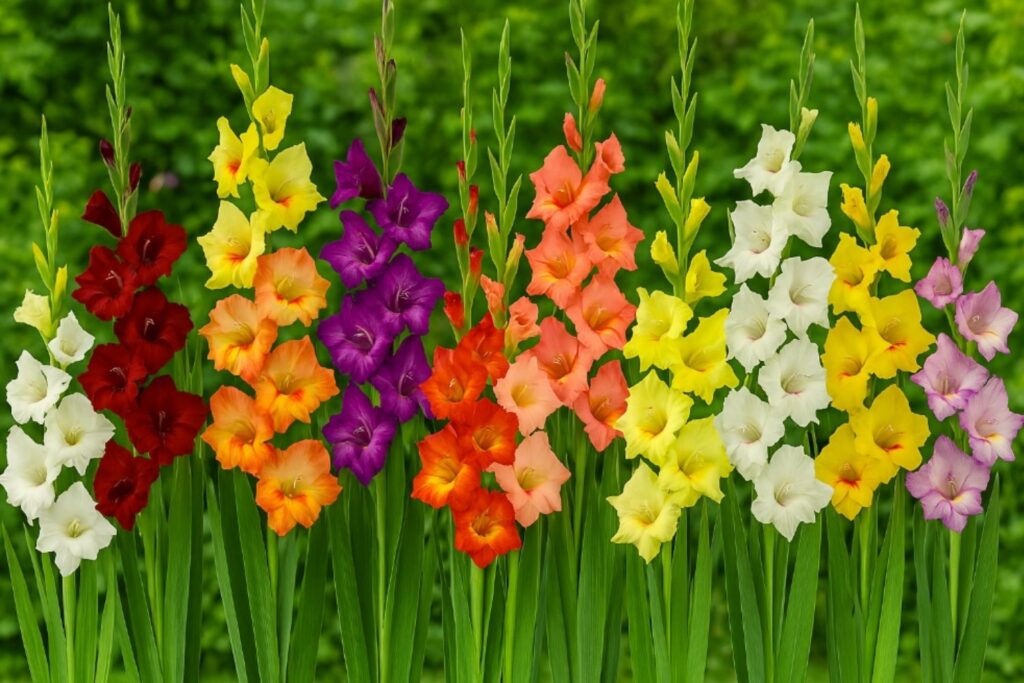
Gladiolus: Growing and Caring
Despite their dramatic appearance, gladiolus are surprisingly easy to grow, making them a favorite for both seasoned gardeners and beginners. They thrive in full sun, and once they start blooming, they’re hard to ignore.
- Planting: Gladiolus grow from corms (similar to bulbs) and are best planted in late spring for summer blooms.
- Spacing: Give each corm a few inches of breathing room—they like to stand tall and not fight for space.
- Watering: Keep soil moist but not soggy, especially while the flower is forming.
- Support: Taller varieties may need staking—these flowers weren’t built for subtlety.
- Aftercare: Once the blooms fade, let the foliage stay until it dies back naturally. That’s how the corm stores energy for the next season.
Gladiolus are flowers with presence—bold but meaningful, structured but emotional. As an August birth flower, they capture what it means to stand tall, stay true, and bloom with purpose.
The poppy is a flower of opposites. It’s fragile, yet unshakable. Brief, but unforgettable. For all its softness, it carries weight—emotional, historical, symbolic. You’ll find it in poetry and memorials, swaying in wild meadows, or peeking up from cracks in dry soil.
As one of the two August birth flowers, the poppy represents imagination, remembrance, and the kind of beauty that doesn’t cling to permanence. It shows up, burns bright, and fades on its own terms. There’s something powerful in that.
Poppy: History and Symbolism
“The poppy is the flower of peace; it blooms even on battlefields.” — Stanley Victor Paskavich
The poppy has meant many things across cultures and centuries, and most of them come down to this: rest, memory, and meaning. In ancient Greece and Rome, poppies were symbols of sleep and dreams. Temples to Hypnos and Morpheus were often surrounded by them, and the flower became associated with not just rest but the mystery of the unconscious mind.
Later, its symbolism shifted to something heavier. After World War I, poppies bloomed across battlefields in Belgium and northern France—growing in churned, bloodied soil where almost nothing else would. The image struck Canadian poet John McCrae, who immortalized the flower in his famous poem In Flanders Fields. Since then, red poppies have become a global emblem of remembrance for fallen soldiers.
But the poppy is also a symbol of imagination and ephemeral beauty. It reminds us that not everything is meant to last forever, some things are meant to be experienced in full, then let go. It’s both grounding and freeing.
Poppy: Unique Characteristics
Poppies don’t try to impress—they just do. Their petals are thin as tissue paper, their centers dark and dramatic, and they never bloom for long. But when they do? You notice. Their brief lifespan is part of their charm—a blink-and-you-miss-it kind of wonder.
They grow wild in fields and roadsides, often with no help at all. They don’t need perfect conditions; in fact, they seem to prefer a bit of chaos. They’re not the type you coddle—they thrive in overlooked places, finding their way through gravel, dry soil, even rubble.
There’s also a bit of edge to them. Poppies have long been linked to opiates and the fine line between healing and harm. That mix of beauty and potency gives them depth, not just a flower, but a story.
When it comes to color, here’s what each brings to the table:
- Red poppies – Remembrance, honor, and intense emotion
- White poppies – Peace, reflection, and nonviolence
- Pink poppies – Softness, emotional openness, and gentle love
- Orange poppies – Boldness, creative fire, and a bit of rebellion
- Purple poppies – Respect, often used to honor animals lost in war
Poppy: Growing and Caring
Growing poppies feels less like gardening and more like collaborating with nature. They’re not picky. They grow best when sown directly into the soil—no trays, no fuss, just seeds and space.
Full sun is their happy place, and they need soil that drains well (they hate soggy feet). Once they bloom, don’t blink—they may only last a few days. But if you let the seed heads mature and dry, they’ll scatter themselves, ensuring a surprise return next year.
Don’t try to over-control poppies. Let them do what they do best—show up unexpectedly, bloom beautifully, and disappear before you can get too attached.
As an August birth flower, the poppy doesn’t need height or permanence to matter. It just needs one good moment—and it knows how to make it count.
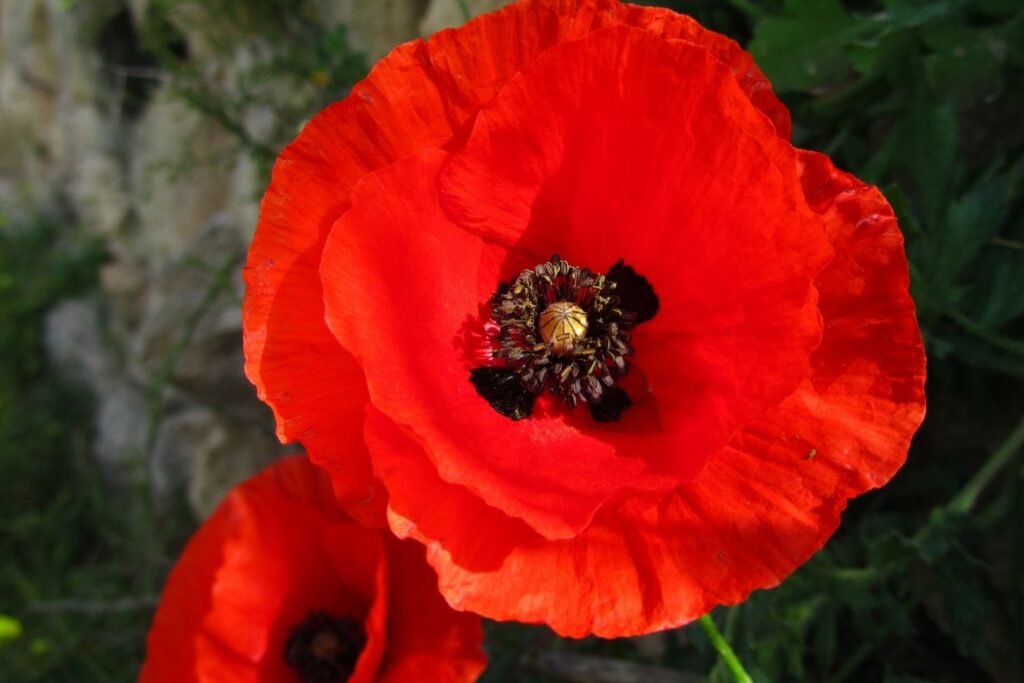
How to Use August Birth Flowers
Gladiolus and poppy aren’t shy flowers—they’re expressive, full of meaning, and built to make an impression. Whether styled tall and dramatic or soft and sculptural, these August birth flowers offer more than beauty—they bring story, depth, and feeling into every setting.
1. In Bouquets and Arrangements
Gladiolus has a natural flair for drama. Its tall, spiked blooms stretch upward, giving floral designs bold structure and movement. It’s the kind of flower that doesn’t need to beg for attention—it already has it. In bouquets and arrangements, it’s often used as the anchor, the showpiece that draws the eye.
Pair it with the fleeting softness of poppies, whose ruffled petals and deep centers add a wild, romantic contrast. Together, they strike that perfect balance—strength and delicacy, presence and poetry. They’re especially striking in centerpieces where vertical lines and color play bring the table to life without overwhelming it.
2. As Gifts
The beauty of gifting August’s flowers lies in their versatility. Gladiolus carries messages of integrity and gratitude, while poppies offer sentiment, reflection, and depth. Together, they can express support, pride, or quiet remembrance, depending on how they’re styled.
They’re fitting for birthdays, milestones, or spontaneous surprises, and they work well in both sculptural modern designs and loose, garden-inspired bundles. These aren’t throwaway flowers—they’re purposeful, and that’s what makes them so memorable to receive.
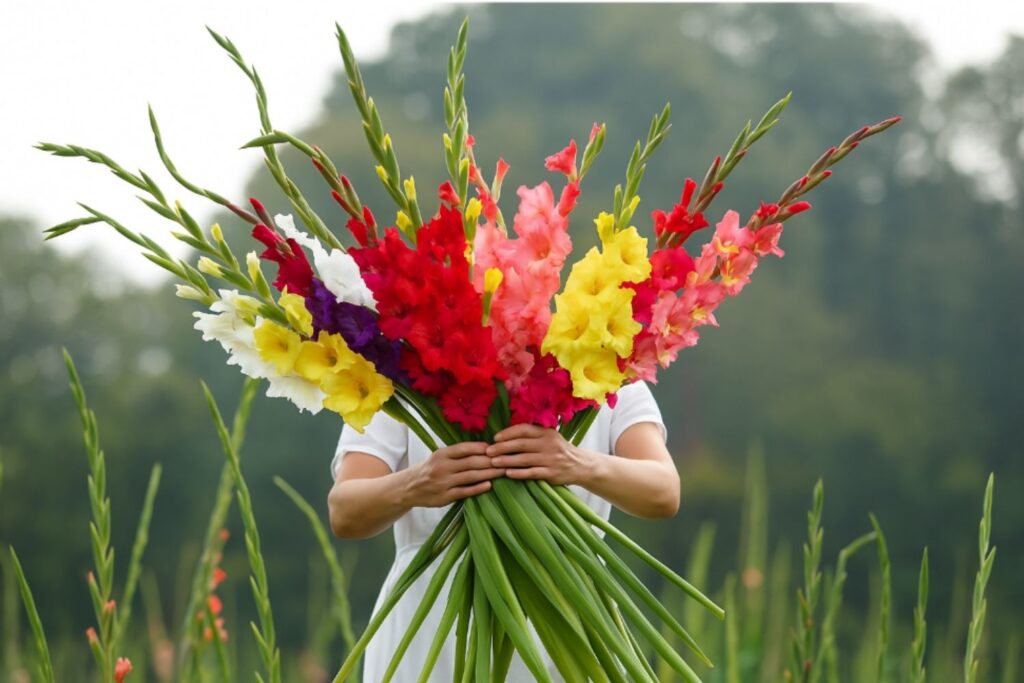
3. In Home Decor
Bring gladiolus into your home and the space instantly shifts. In a tall vase, it commands attention in an entryway or open corner, drawing the eye upward and adding shape to the room. It’s clean, architectural, and perfect for modern interiors or eclectic spaces that need a bit of structure.
Poppies, on the other hand, are best appreciated up close. They’re ideal for small vessels in intimate spaces—places where their delicate nature can be admired before it fades. And once the blooms are gone, their pods offer sculptural beauty that lasts through the seasons.
Fun Facts About August Birth Flowers
Gladiolus and poppy aren’t just eye-catching—they come with rich histories, surprising quirks, and more depth than you might expect from two flowers that peak in the hottest stretch of the year. Here are a few fascinating facts about August birth flowers that make them even more meaningful:
- The gladiolus was once known as the “sword lily.” Its name comes from the Latin gladius, meaning sword—thanks to its blade-like leaves. In ancient Rome, it was the flower of champions. Victorious gladiators were literally showered with gladiolus petals after a win. Flowers as fanfare? Yes, please.
- Gladiolus has a floral language all its own. In Victorian times, giving someone a gladiolus meant you were being emotionally pierced—“you’ve struck me through the heart.” Dramatic? Sure. But for those moments when you’re trying to say something big with a small floral gesture, it’s a pretty great option.
- Poppies self-seed with zero effort. Once they bloom and drop their seeds, poppies will return on their own year after year—often in unexpected places. It’s a flower that knows how to make a comeback, no reminder or watering schedule is needed.
- Some species of gladiolus are native to South Africa. While many associate them with Europe, over 250 species come from South Africa, where they grow wild and bright across grasslands and hillsides. Turns out they’re more globe-trotter than garden staple.
- Poppy seeds are edible—but not all poppies are safe. The seeds on your bagel? Harmless. But other parts of the poppy plant, especially the opium poppy (Papaver somniferum), contain powerful compounds that were once used for medicine… and much more. It’s a flower with a complex résumé.
- Red poppies inspired both poetry and activism. Beyond In Flanders Fields, red poppies have become powerful emblems for honoring fallen soldiers and advocating for peace. A flower that speaks softly but carries weight.
- Gladiolus blooms from the bottom up. When it flowers, the lowest blossoms open first, followed by the ones above. It’s a built-in metaphor—progress, growth, and rising into your strength.
Sum Up
So the next time you give someone a gladiolus or a poppy, even if it’s a small, just because bouquet—you’re not just handing over a pretty flower. You’re offering a story, a symbol, a moment that can stick. These blooms aren’t filler—they’re full of history, personality, and a whole lot of heart.
Together, they speak to August’s energy: the boldness to rise, and the vulnerability to feel. Whether you’re giving them, growing them, or just admiring their meaning, these flowers offer more than beauty—they offer perspective.
Because sometimes, a flower isn’t just a flower. Sometimes, it’s a reminder to live unapologetically, love honestly, and leave something meaningful behind.
And when you’re ready to share that kind of message, whether it’s for a birthday, a milestone, or no reason at all, Ode à la Rose’s thoughtfully designed bouquets are here to help you say it beautifully, with flowers that mean something.

